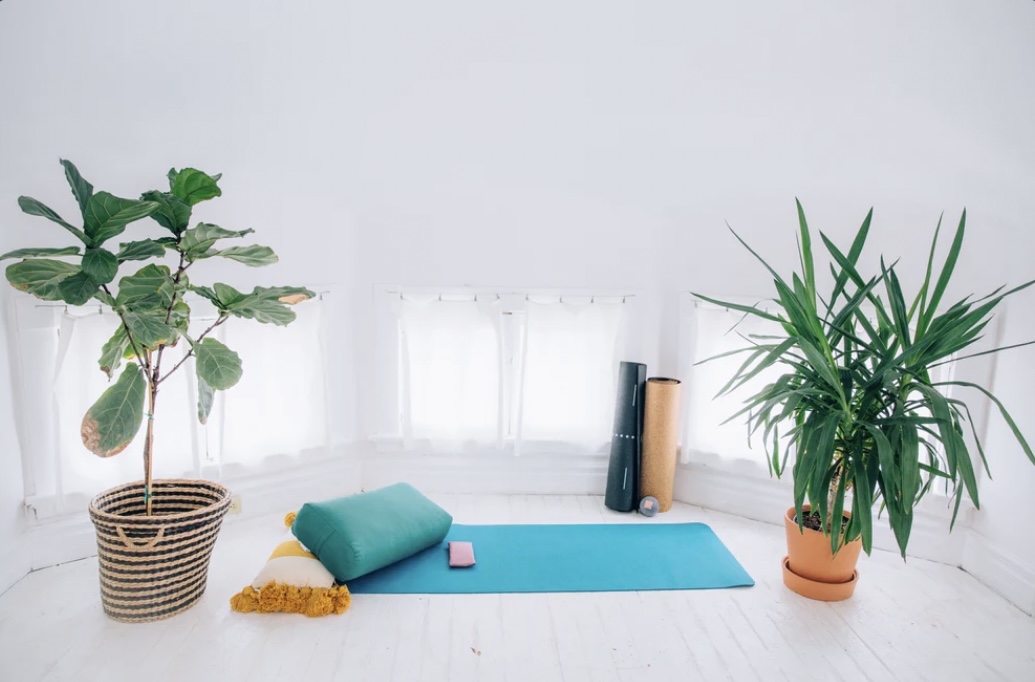
Establishing a home yoga practice can be a transformative way to bring balance, calmness, and well-being into your life. Whether you’re a beginner or an experienced yogi, practicing yoga at home offers flexibility, convenience, and the opportunity for a more personalized experience.
In this blog post, we will explore practical tips and guidance on how to establish a fulfilling home yoga practice that suits your individual needs.
1. Designate a Sacred Space:
Creating a dedicated space for your home yoga practice helps set the intention and creates a peaceful atmosphere. It doesn’t have to be a large area; a corner or a section of a room will suffice. Clear the space of clutter, decorate it with meaningful objects or symbols, and consider adding elements like candles or incense to enhance the ambiance.
2. Establish a Routine:
Consistency is key when it comes to a home yoga practice. Set a regular schedule that works for you, whether it’s early morning, lunchtime, or evenings. By committing to a specific time, you’re more likely to make yoga a daily habit. Start with shorter sessions, gradually increasing the duration as you become more comfortable and familiar with the practice.
3. Gather Essential Props:
Having a few basic yoga props can greatly enhance your home practice. Invest in a good quality yoga mat to provide stability and support. Additionally, blocks, straps, and bolsters can be helpful for modifying poses and deepening stretches. These props ensure that you can adapt your practice to suit your body’s needs and prevent injuries.
4. Utilize Online Resources:
One of the advantages of a home yoga practice is the abundance of online resources available. Explore reputable yoga websites, YouTube channels, or mobile apps that offer guided classes and tutorials. Choose instructors whose teaching style resonates with you and gradually build a library of favorite classes that you can access anytime.
5. Set Intentions and Goals:
Before each practice, take a moment to set intentions or goals for your session. It could be as simple as cultivating mindfulness or focusing on a specific aspect, such as flexibility or balance. By clarifying your intentions, you create a purposeful and meaningful practice that goes beyond the physical aspects of yoga.
6. Listen to Your Body:
One of the benefits of a home practice is the freedom to tailor the session to your body’s needs. Pay attention to how you feel each day and modify your practice accordingly. If you’re fatigued, opt for a gentle flow or restorative poses. On days when you have more energy, challenge yourself with invigorating sequences. Trust your body and honor its limitations.
7. Stay Inspired:
Inspiration plays a vital role in maintaining a consistent home yoga practice. Seek inspiration from books, podcasts, or social media accounts that share motivational stories, quotes, or insights related to yoga. Connect with the global yoga community online to stay engaged and inspired by others’ journeys.
In conclusion, your own home yoga practice empowers you to take control of your well-being and cultivate a deeper connection with yourself. By following these practical tips and guidance, you can create a sacred space, develop a routine, and access a wealth of online resources to support your journey. Remember, your home yoga practice is a personal and transformative experience that allows you to explore the depths of your mind, body, and spirit. Embrace it with an open heart and an open mind. Namaste.



